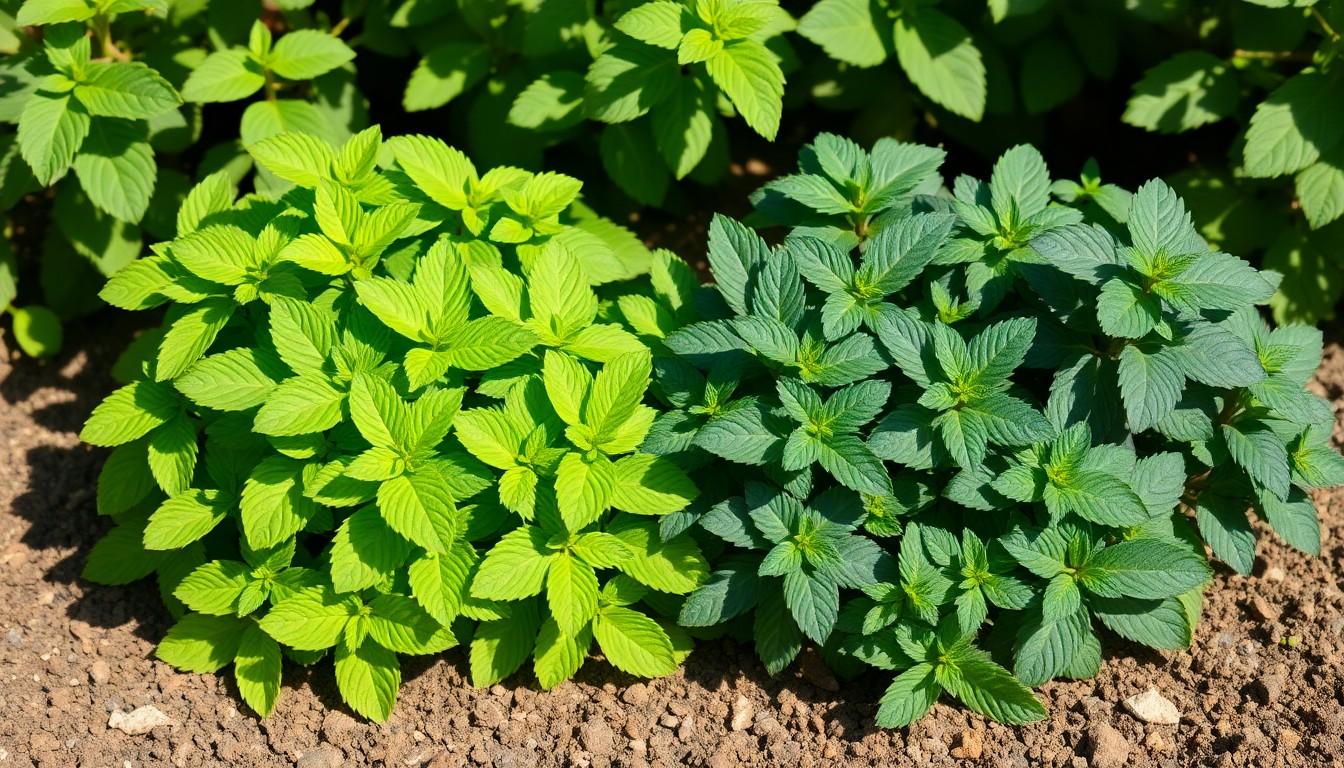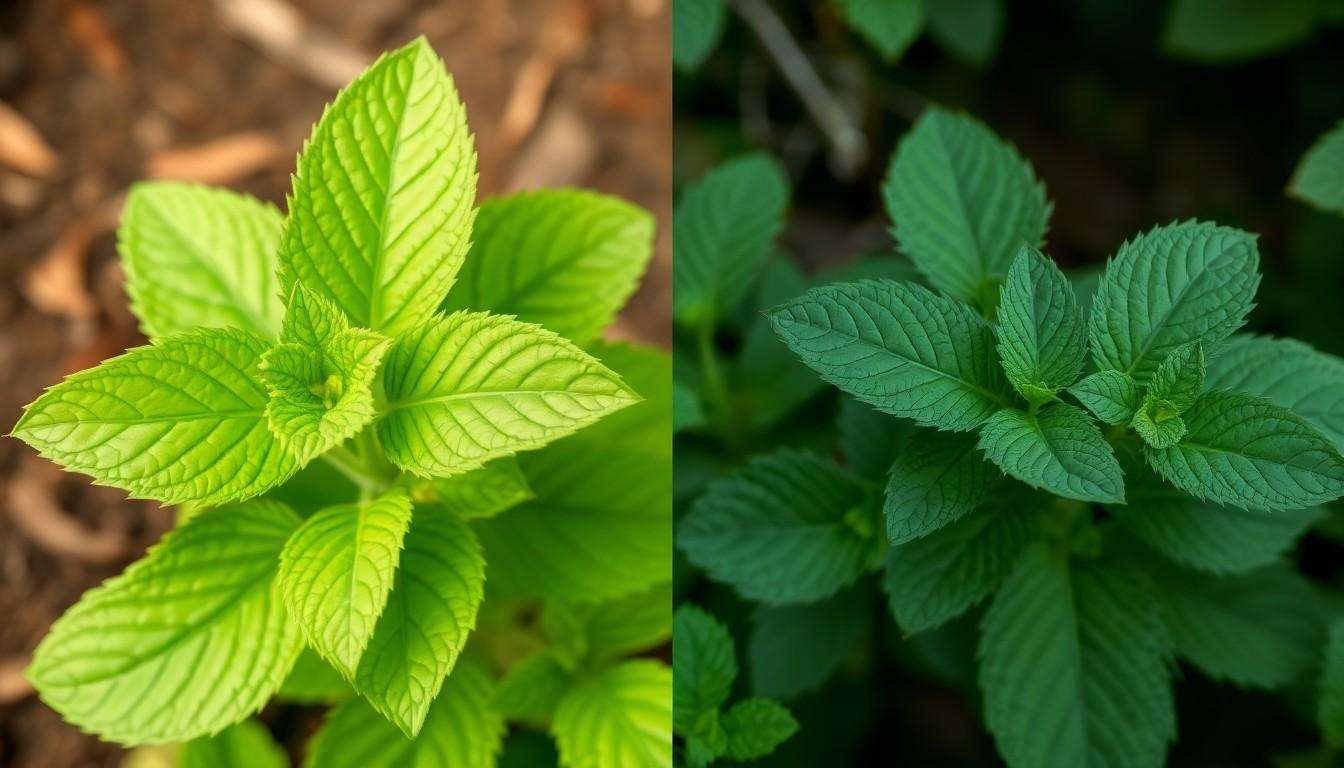Phone:
(701)814-6992
Physical address:
6296 Donnelly Plaza
Ratkeville, Bahamas.

When it comes to mint, most people think they know their stuff. But wait—there’s a twist in the garden! Spearmint and peppermint might seem like two peas in a pod, but these aromatic plants have their own unique personalities. Picture spearmint as the laid-back cousin who’s all about fresh mojitos, while peppermint is the intense overachiever, ready to spice up your hot chocolate.
Mint plants belong to the Lamiaceae family. This family includes a wide range of aromatic herbs. Spearmint and peppermint are two popular varieties within this group, each with unique traits. The scientific name for spearmint is Mentha spicata, while peppermint is called Mentha × piperita.
Appearance varies between these two types of mint. Spearmint features bright green leaves with a slightly serrated edge. Peppermint, on the other hand, has dark green, pointed leaves with a smoother texture. Both plants produce square stems, a common characteristic of mint family members.
Aroma plays a significant role in distinguishing between spearmint and peppermint. Spearmint emits a light, sweet scent due to its lower menthol content. Peppermint has a stronger, more intense aroma that comes from higher menthol levels.
Growing conditions for both plants differ slightly. Spearmint thrives in well-drained soil with moderate sun exposure. Peppermint prefers partial shade and consistently moist soil, making it suitable for cooler climates. Both types of mint can spread quickly in gardens, so regular pruning and containment are necessary to maintain desirable growth.
Culinary uses showcase the versatility of these plants. Spearmint shines in recipes for beverages, salads, and sauces. Peppermint often enhances desserts and chocolates, providing a distinctive flavor profile.
Identifying these plants requires attention to their variations. Their color, aroma, and growing habits offer clear indicators for accurate identification. Recognizing these differences allows for effective usage in culinary and medicinal applications.

Spearmint and peppermint exhibit distinct characteristics that are easy to identify. Understanding these differences aids in recognizing each plant’s unique features.
Spearmint, classified as Mentha spicata, showcases bright green, serrated leaves. Peppermint, known as Mentha × piperita, displays dark green, pointed leaves. Spearmint plants grow up to 30 inches tall, while peppermint typically reaches 18 to 24 inches. Leaf shape further differentiates them; spearmint leaves tend to be more elongated, and peppermint leaves are broader. The higher menthol concentration in peppermint gives its leaves a shinier appearance. Aroma contributes to their identification as well; spearmint produces a light, sweet scent due to lower menthol levels compared to the stronger scent of peppermint.
Spearmint offers a mild, sweet flavor suitable for various dishes. It complements drinks like mojitos well, providing a refreshing touch. In contrast, peppermint presents a stronger and cooler taste that enhances desserts like chocolate. Spearmint is often preferred for culinary purposes where a gentle flavor is desired, such as salads and teas. Peppermint, rich in menthol, works best in recipes where intensity is key, like candies and baked goods. Taste profiles reflect their distinct chemical compositions, influencing how they are used in cooking and beverages.
Growing spearmint and peppermint requires attention to specific conditions to thrive. Each plant has unique needs which determine their growth and flavor.
Well-drained soil works best for both spearmint and peppermint. They thrive in rich, loamy environments with a pH range of 6.0 to 7.0. To enhance drainage, adding organic matter like compost helps as it retains moisture while preventing waterlogging. Both plants prefer soil that is consistently moist yet not saturated. Mulching around the plants further regulates soil temperature and retains moisture.
Full sunlight promotes robust growth for spearmint and peppermint plants. Generally, they require at least 6 hours of direct sunlight daily to develop their flavor fully. Keeping the soil evenly moist supports healthy growth, so frequent watering is essential, especially in hot weather. Both types can tolerate some shade but perform better in sunnier spots. Adjusting the watering frequency during dry spells ensures vibrant leaves and rich flavors.
Spearmint and peppermint find diverse applications in culinary and medicinal fields.
Spearmint’s mild, sweet flavor makes it perfect for salads, teas, and sauces. Culinary experts often use it in dishes that require a subtle freshness. Fresh spearmint leaves enhance beverages, adding a refreshing twist to cocktails. Peppermint, with its strong, cool taste, shines in desserts, teas, and confections. Chocolatiers often incorporate peppermint in candies like peppermint bark and chocolate mint. Both herbs add depth to savory dishes, with spearmint being popular in Mediterranean cuisine. It’s noteworthy that they can also flavor oils and vinegars for dressings. Chefs value their versatility, ensuring these herbs elevate various culinary creations.
Peppermint possesses therapeutic properties, making it a popular choice for soothing digestive issues. It aids in relieving headaches when used in essential oil form. Spearmint also offers health benefits, primarily known for its calming effects. Herbalists recommend spearmint tea for stress relief and digestive comfort. Both plants contain antioxidants that support overall wellness. Peppermint oil can assist with muscle relaxation when applied topically. In addition, spearmint is effective in oral care products for its antibacterial properties. Their medicinal uses extend to aromatherapy, where their scents promote relaxation and mental clarity.
Identifying spearmint and peppermint plants can enhance both culinary and medicinal experiences. Their unique characteristics make each suitable for different applications. Spearmint’s mild flavor complements fresh dishes while peppermint’s intense taste elevates desserts and confections.
Understanding their growth habits and care requirements ensures healthy plants. Regular watering and sunlight play crucial roles in their development. Whether for cooking or health benefits, knowing how to distinguish between these two mints allows for better choices in the kitchen and beyond. Embracing the versatility of spearmint and peppermint can lead to delightful discoveries in flavor and wellness.